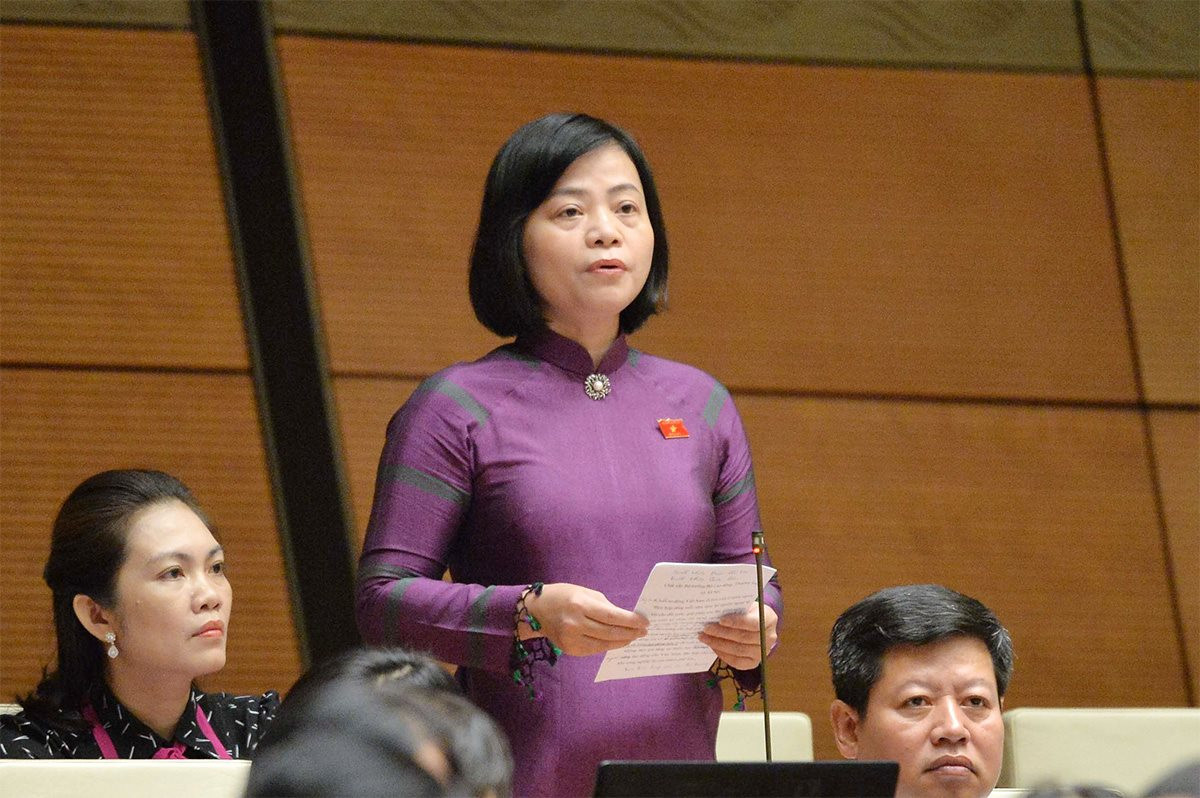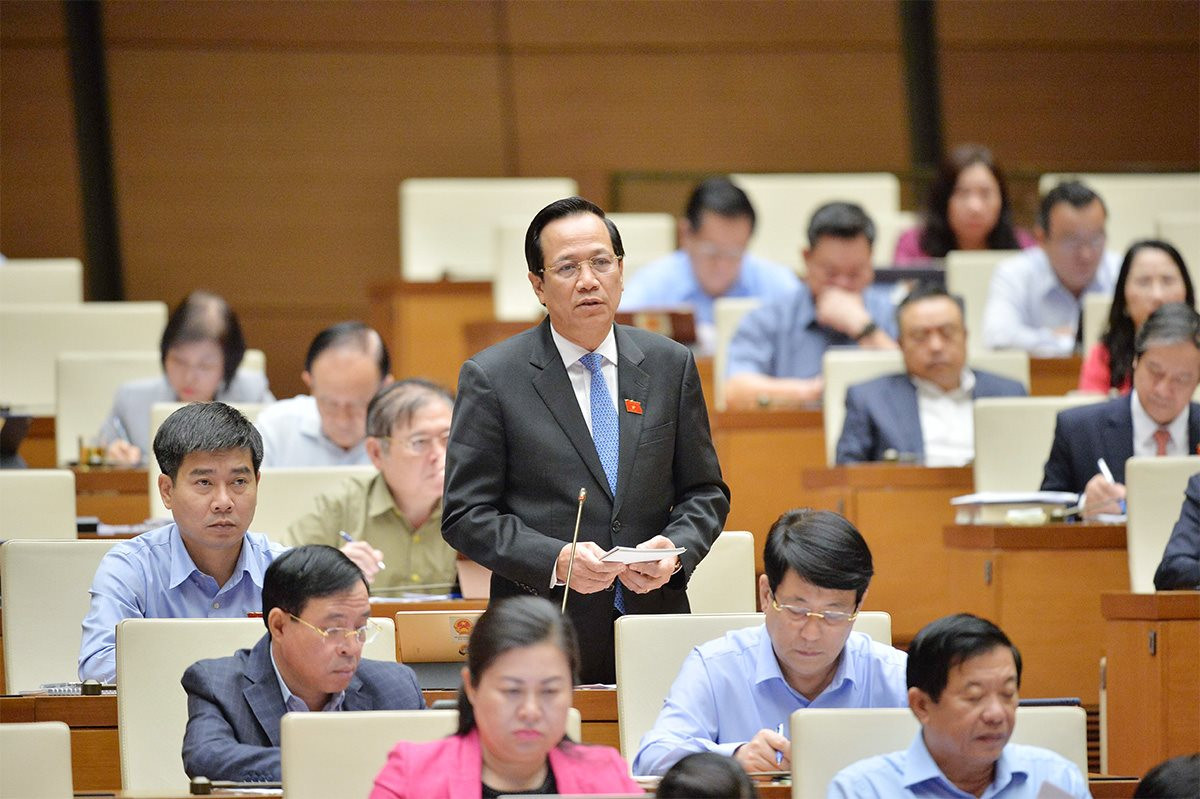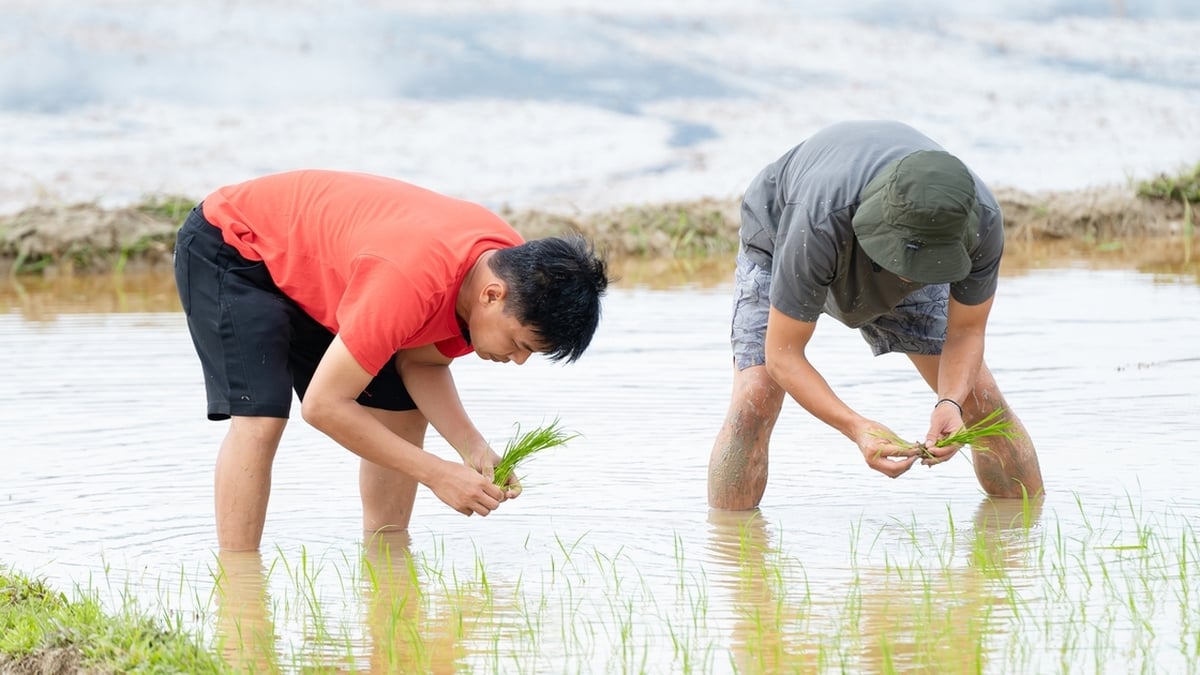Questioning the Minister of Labor, Invalids and Social Affairs, National Assembly Deputy Nguyen Thanh Cam ( Tien Giang ) asked the Minister to provide solutions for effective use of high-quality human resources after labor export, and a plan to ensure labor export in a reasonably structured manner. Thereby, on the one hand, ensuring the rights of the people, on the other hand, not increasing the shortage of domestic labor, especially in industrial zones of large cities.

Responding to questions from delegates, Minister Dao Ngoc Dung said that, according to the spirit of the Law on Sending Vietnamese Workers to Work Abroad under current contracts, on average, our country sends about 120,000 - 143,000 people to work abroad per year. In 2023 alone, up to this point, 112,000 people have been sent to work abroad, including 55,000 people in Japan and about 30,000 people in Taiwan (China). On average, according to information provided to the Ministry by competent agencies, this labor force brings about 3.5 - 4 billion USD to the country each year.

To promote the effectiveness of the overseas labor force, the Government has issued instructions in the Government Resolution. The Ministry of Labor, War Invalids and Social Affairs has been implementing solutions for workers after returning home, such as building an electronic information page, building a job exchange; connecting Vietnamese and foreign enterprises.
For example, in the case of workers returning home from Japan, they can work in Japanese enterprises to develop their capacity, or in the case of workers in domestic enterprises, they can go to foreign enterprises... There are regulations on converting and supplementing short-term, seasonal, and seasonal labor forms... to take advantage of their capacity and strengths. Create conditions for this group of people to borrow capital to continue production and business, creating conditions to attract a skilled workforce after returning home.
Regarding scale, Minister Dao Ngoc Dung stated that currently, our country creates jobs for about 1.6-1.7 million domestic workers each year. Thus, it is estimated that if we can send 130-140 thousand workers abroad each year, it will be equivalent to about 10% of the workforce. According to the Minister, the current scale of 500,000-650,000 people regularly working and working abroad is reasonable.
Minister Dao Ngoc Dung also said that based on supply and demand, if domestic labor demand increases, the Ministry will adjust the rate of labor going abroad and when domestic demand decreases, it will increase the number of laborers going abroad to ensure a suitable labor scale. The Ministry will also focus on selecting suitable industries, fields, and locations to ensure a suitable structure, without affecting the scale of domestic labor.
Concerned about the issue of preventing accidents and injuries in children, National Assembly member Le Van Kham (Binh Duong) said that every year, about 2,000 children die from drowning. One of the effective solutions is to teach children to swim safely, however, the rate of schools with swimming pools is still low, and swimming teaching has not been promoted. The delegate requested that the Minister of Labor, War Invalids and Social Affairs provide the causes and solutions to increase the rate of students who can swim according to standards.
Responding to questions from delegates, Minister Dao Ngoc Dung said that in the past, if calculated in the ASEAN region, in previous years Vietnam often ranked second only to Indonesia in the rate of child drowning. After the Resolution of the National Assembly, the Government, the Prime Minister and the National Committee for Children held a National Conference on this issue. The Prime Minister issued Official Dispatch No. 398 issued in May 2022, specifically assigning the Ministry of Education and Training together with the Ministry of Culture, Sports and Tourism, especially the Ministry of Education and Training, to be directly responsible for directing swimming instruction and drowning prevention in schools.
"Over the past two years of implementation, the rate of child drowning has decreased, especially in 2022, it has decreased by 5%, with about over 100 children," said the Minister.
The Minister also pointed out that although our country's swimming teaching solutions in schools still have many limitations, they have been tested, evaluated and have had initial results by the World Health Organization, and at the same time, it is necessary to encourage further expansion. Therefore, in the coming time, the Ministry will continue these solutions to promote more in schools, especially allocating resources and equipment to teach swimming more in schools.
Source


























![[Photo] National Assembly Chairman attends the seminar "Building and operating an international financial center and recommendations for Vietnam"](https://vphoto.vietnam.vn/thumb/1200x675/vietnam/resource/IMAGE/2025/7/28/76393436936e457db31ec84433289f72)










































































Comment (0)